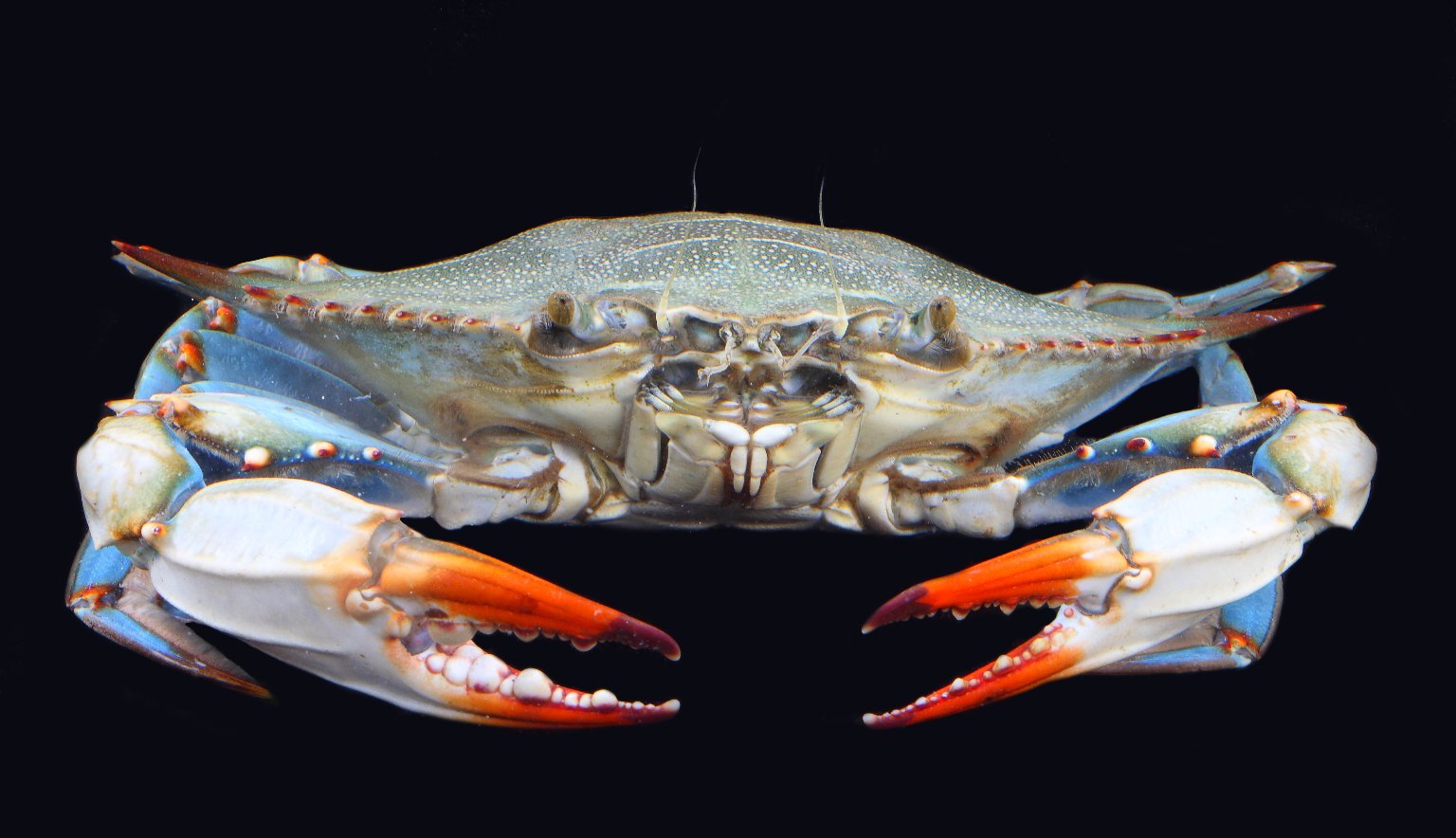The Chesapeake Bay is an extraordinarily complex ecosystem and the Bay is the largest estuary in the United States. Numerous rivers, streams, plants, and wildlife–along with human encroachments–encompass the rich ecosystem of theChesapeake. Within any eco systems, there are divisions and distinctions between varying levels of living things. For example, the base of the Chesapeake’s ecosystem consists of organisms called benthos, which is a word of Greek origin meaning, “depths of the sea” (The Bay Ecosystem). These organisms include clams, oysters, sponges, and barnacles, among many others. Larger organisms such as blue crabs and striped bass then consume these organisms and contribute to the overall health of the Bay.
The Chesapeake has become widely associated with the Blue Crab. Not only are these crustaceans crucial to the ecosystem, serving as both consumer and consumed, they also play a large role in the economic wellbeing of many local fisheries (Blue Crabs). The results of a survey taken in 2015 estimate that over 400 million Blue Crabs live in the Chesapeake Bay; of them, about 100 million are adult females (Blue Crabs). The number of adult female crabs has increased by over 30 million since 2013. Several factors including limited bay grass to feed on and increased pollution have proven very detrimental to the Blue Crab population. Like Blue Crabs, Chesapeake Bay oysters are crucial to the Bay’s ecosystem and have supported local businesses for centuries. Oysters are filter feeders by nature: they take in water, trap particles such as chemicals and their own food, and then release the cleaner water back into the Bay. By doing this, oysters keep the water around them much cleaner–and clearer–than it would otherwise be. In fact, one oyster can filter over 40 gallons of water in a single day (Oysters). Oysters, however, have been historically over-harvested. In addition, the deterioration of their environment and parasitic diseases have both led to a dramatic decline in the oyster population (Oysters). Today, commercial oyster fishing has declined so far as to be almost negligible.
Likewise, maintaining a stable number of Striped Bass is essential to preserving a balanced ecosystem in this massive estuary. As one of the top predators in the Bay, it is crucial that there are a sufficient number of organisms for these bass, and other fish species, to consume. In addition, they produce a commercial fishery that has supported–no to mention fed–virtually millions of human beings in Maryland, Virginia, and elsewhere. Around the 1970s and 1980s, however, the number of Striped Bass experienced a sharp decline. In 1973, the commercial fishery produced over 14 million pounds of of this flavorful fish; however, just ten years later fisheries failed to catch even two million pounds worth (Striped Bass). To fight this problem, the Atlantic Striped Bass Conservation Act was passed in 1984 (Striped Bass). By 1995, thanks to consistent efforts at conservation–and successful breeding programs–levels of Striped Bass were back to their earlier highs. –K.M.

